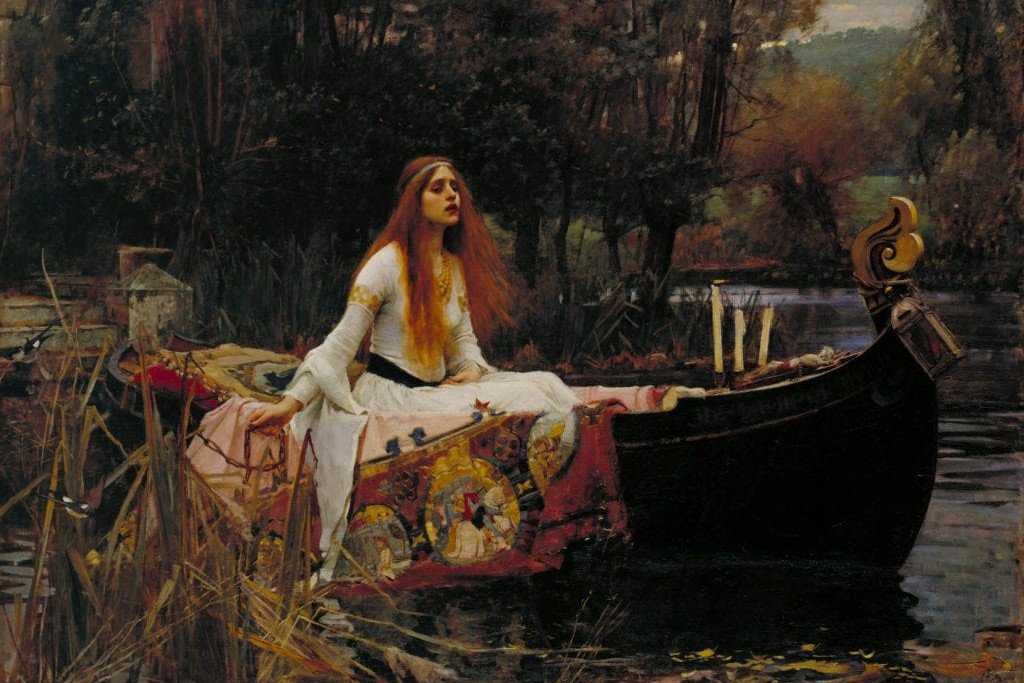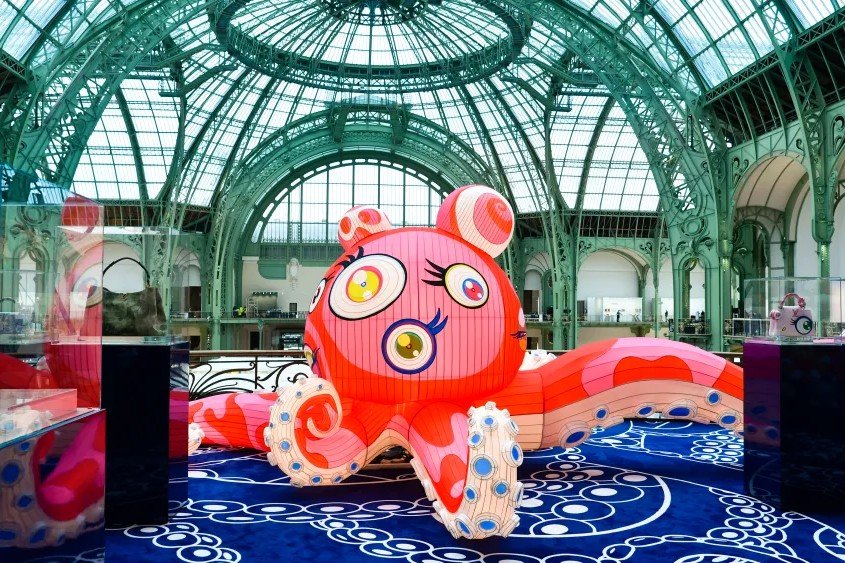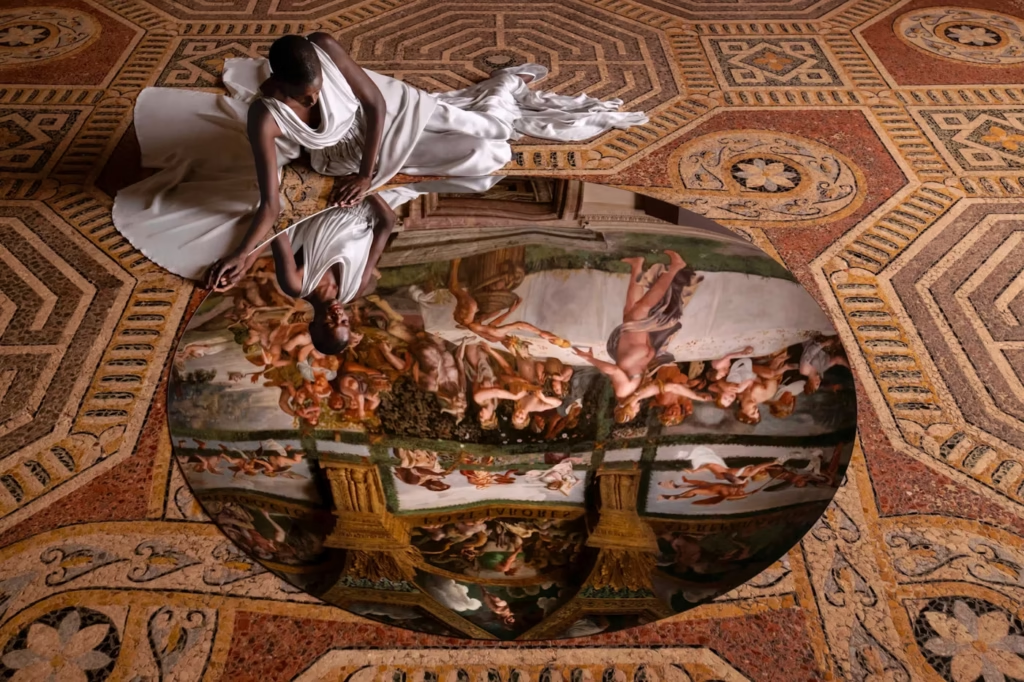A Poet’s Muse, A Painter’s Obsession
John William Waterhouse wasn’t just a fan of Lord Alfred Tennyson—he was obsessed. So much so that he filled the blank pages of his personal copy of Tennyson’s poems with sketches, some of which became paintings. At the center of that obsession was The Lady of Shalott, a lyrical ballad of isolation, beauty, and fatal longing.
In 1888, Waterhouse brought the poem to life on canvas in what would become one of his most celebrated works: The Lady of Shalott.
A Moment of Defiance and Doom
The painting captures a fleeting, poignant moment. A young woman with flowing red hair sits in a richly adorned boat, just moments from casting off. She’s leaving the tower where she lived in cursed seclusion, bound downriver toward Camelot—and to her death.
Details speak volumes:
- The name carved into the boat confirms her identity.
- Three candles, with two snuffed out, symbolize a fading life.
- A crucifix, draped at the bow, hints at sacrifice.
- The chain in her hand is her last tie to safety—and she’s letting go.
This is a portrait of a woman choosing agency over fate, even knowing the cost.
Pre-Raphaelite Heart, Modern Hand
Although painted decades after the height of the Pre-Raphaelite movement, Waterhouse’s Lady of Shalott echoes its core themes: medieval myth, romantic tragedy, and rich natural symbolism. Yet his brushwork brings a softness and fluidity that hints at more modern, impressionistic influences.
In this way, Waterhouse bridged eras—paying homage to the Pre-Raphaelites while creating something undeniably his own.
Why She Still Haunts Us
The painting continues to captivate because it speaks to timeless themes: the longing for freedom, the cost of curiosity, the power of myth. The Lady of Shalott is both a symbol and a soul—beautiful, doomed, and deeply human.
Waterhouse didn’t just paint a poem—he gave it breath, mood, and memory. And over a century later, her image still drifts through the collective imagination, luminous as ever.













